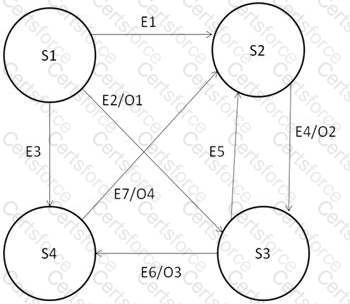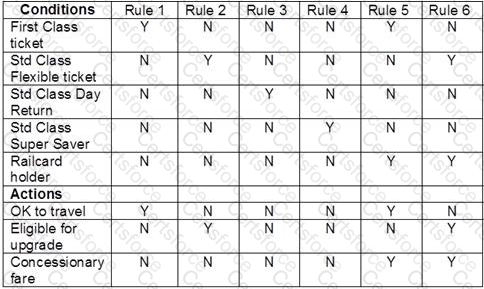A test case starts at S1 and triggers 4 events in sequence: E1, E4, E5, E7. What will be the finishing state and the output(s) from the test case? [K3]
Refer to the exhibit

Which of the following correctly states a limitation in the use of static analysis tools? [K1]
The Cambrian Pullman Express has special ticketing requirements represented by the partial decision table below.
Refer to the exhibit

Carol has a student railcard and is travelling on a Flexible Standard Class ticket. James has a senior railcard and is travelling on a super saver ticket. Which of the options represents the correct actions for these two test cases? [K3]
Which of the following characteristics is most likely to promote effective software testing? [K1]
“Experience based" test design techniques, typically...
Consider the following pseudo code:
1. Begin
2. Input X, Y
3. If X > Y
4. __Print (X, ‘is greater than’, Y)
5. Else
6. __Print (Y, is greater than or equal to’, X)
7. EndIf
8. End
What is the minimum number of test cases required to guarantee both 100% statement coverage and 100% decision coverage?
Which of the following would NOT be a typical target of testing support tools?
Which statement BEST describes when test planning should be performed? [K1]
Which of the following best describes the Black-box technique?
Consider the following pseudo code
1. Begin
2. Read Gender
3. __Print “Dear”
4. If Gender = ‘female’
5. Print (“Ms”)
6. Else
7. __Print ( “Mr”)
8. Endif
9. End
How many test cases are needed to achieve 100 per cent decision coverage?